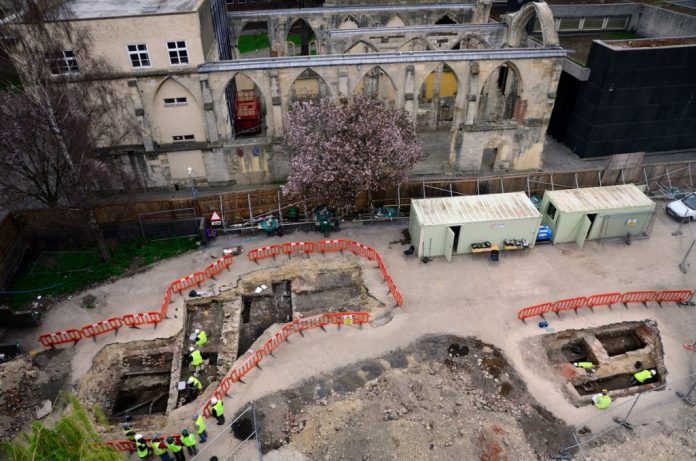Worked bone Roman hilt guard from the legionary fortress at Gloucester
Cotswold Archaeology excavations at the site of Gloucester Greyfriars, on behalf of Gloucestershire College of Arts and Technology, took place some ten years ago now. The site lay within the southwestern area of the Roman colonia (fortress) and evidence was found here for Roman buildings, and the legionary and later defences. Military artefacts from the excavation included a belt buckle and the sheath fitting of a dolabra (military pickaxe) — both of copper alloy, and an iron tent or tethering peg. In the Roman rampart material, which contained a small quantity of broadly datable Roman pottery, we also recovered a sword hilt guard of a rare type.

V-decorated hilt guards can be seen on cavalry swords depicted on Trajan’s column and have never been found in association with any surviving gladii (short sword). They are therefore thought to have only been used on spathae (long swords) which, during the 1st century, were used almost exclusively by the auxiliary cavalry. It is most likely that this hilt guard came from a spatha, which would would make it the most westerly example of a form found mostly in the north-western provinces, dating from Augustan through to the 2nd century.
The legionary fortress at Glevum was occupied in the 60s to 80s AD, providing strategic protection for the River Severn crossing. Although the legions of the period were largely infantry, numbering around 5,000 in comparison to only 120 cavalry, it is known from tombstone evidence that Auxiliary cavalry were based in the area. If the hilt guard comes from a spatha this implies the presence of cavalry who could have been stationed within the fortress.
Written by
Claire Collier-Jones (Assistant Finds Officer) and Ed McSloy (Principal Finds Manager)
With additions from Stephen Greep, Chair of Roman Finds Group
from : Gloucester Greyfriars: Roman hilt guard – Cotswold Archaeology

